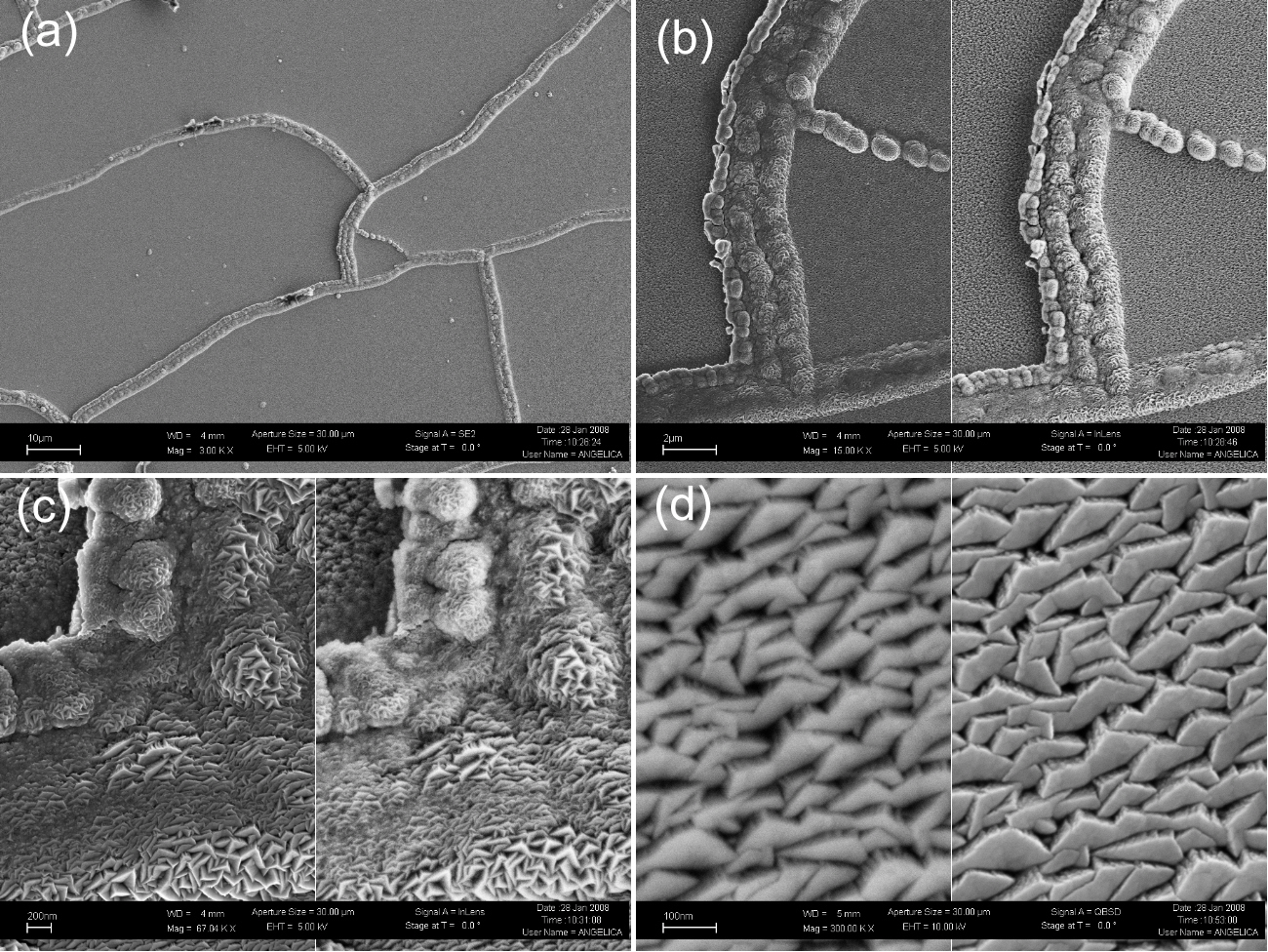Plasma assisted surface modification at the nanoscale
The development of innovative surface modification processes and plasma-assisted technologies is of great importance for improving several industrial processes. Some examples are: surface modification of fibers and fabrics by plasma processes for textile industry applications; plasma assisted surface modifications of polymer films for the food packaging industry; thin films for tribological applications; substitution of electroplating processes by PVD technologies; nonthermal plasma processes for the control of air pollution.
The deposition of inorganic thin films, such as metals and dielectrics, on a wide range of substrates is of great interest in many different industrial application fields, including automotive industry, textile industry, food packaging industry, as well as biomedics and dental research. As an example, in the automotive industry the substitution of metal components with plastic parts is raising in frequency due to the need of reducing production costs. However, most polymeric materials are not able to provide to the automotive components the required properties of moisture and corrosion resistance, as well as the optical properties, that are typically provided by chromed metallic parts. For these reasons the deposition of metal layers over plastic components is a common practice in the automotive industry, and is commonly achieved by means of electroplating processes, but could as well be performed by vapor deposition (PVD or CVD), with the advantage of reducing the ecological impact. For what concerns the textile industry, the increasing demand of high-tech textiles produces a continuous technological effort to the application of surface modification technologies to the natural and artificial fibers and textiles. To this aim, metallic coatings are of great interest since they can imbue fibers and textiles with several functionalities, such as optical properties (e.g. for high visibility jackets) and electrical conductivity properties (e.g. for EM shielding). Moreover, dielectric films are useful to modify the chemical behavior of fibers, e.g. providing hydrophobic properties, and for the protection of fibers from aggressive chemicals used during dye processes. Also in the food packaging industry polymeric films are of wide usage, and it is a common practice to apply metals or dielectric films in order to improve some of the film performances. A typical example is the application of thin silicon oxide or aluminum oxide coatings to reduce the film permeability to oxygen, water vapor, or carbon dioxide.
Also surface modification technique, such as plasma assisted surface modification, plasma immersion ion implantation and plasma etching, show a gret potential for the performance improvement of a wide range of materials. As an example, plasma assisted surface nitruration of metals is an advanced technique that can improve the surface hardness, change tribological properties and also have an important effect on the biological interaction.
While many technologies are available for coating deposition and surface modification, in order to achieve advanced results on the material properties it is required to achieve a control of the surface properties at the nanometric scale. Our laboratories are equipped with advanced instrumentation for the surface modification of materials at the nanometric scale, and with advanced techniques for the surface characterizations of materials at the nanoscale.

Surface of Cr thin films deposited on polymeric substrates, seen at the scanning electron microscope.
Contact information
Pietro Mandracci
Tel. +39 011 090 7383
pietro.mandracci@polito.it



